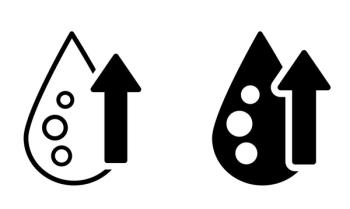
Suboptimal Statin Use Seen Common and Harmful
UTRECHT, The Netherlands -- Statins are being underdosed by physicians and underused by patients, leading to thousands of unnecessary heart attacks every year, according to a large Danish study.
UTRECHT, The Netherlands, Dec. 7 -- Statins are being underdosed by physicians and underused by patients, leading to thousands of unnecessary heart attacks every year, according to a large Danish observational study.
Among 59,094 new statin users in a database of Dutch pharmacy and hospital records, only 35% of patients stayed on statin therapy for at least two years at the most protective dose, said Fernie Penning-van Beest, Ph.D., of the PHARMO Institute here, and colleagues reported online today in the European Heart Journal.
If these findings are typical of clinical practice in other countries, Dr. Penning-van Beest said there may be 7,000 to 9,000 Europeans and 5,000 to 7,000 Americans suffering unnecessary heart attacks each year because of suboptimal dosing or discontinued therapy.
"Our findings corroborate findings from clinical trials insofar that the longer patients are treated and the higher the dose, the more successful the prevention of acute MIs," the investigators wrote.
In daily practice, there may be several reasons why statins are discontinued, including patient compliance and reimbursement factors, they said. However, the study did not examine reasons why patients stopped taking statins.
Overall, the researchers found that 53% of patients in the Dutch cohort discontinued statin therapy within two years. This put them at 30% higher risk of hospitalization for acute myocardial infarction compared to persistent statin users.
Almost a quarter of persistent users were on a suboptimal statin dose (24.2%, equipotent dose ?3) when the researchers combined statin type and dose into a equipotency score to reflect reduction in total cholesterol such that each unit increase in score doubled the effective dose.
Patients who stayed on an equipotent dose of 3 or less had 20% lower risk of acute MI hospitalization compared to nonpersistent users whereas patients on an equipotent dose of at least 4 had 40% lower risk.
"The results of this study show that in daily practice, statins, on average, are sub-optimally dosed and used over too short a time interval to have maximum benefit regarding preventing acute MI," they wrote.
Because clinical trials have shown that statin adherence and dose impacts the effectiveness of therapy, the researchers examined the PHARMO database that links drug-dispensing, hospital discharge, and other records for more than two million patients in The Netherlands. They included patients who began statin therapy from 1991 to 2004 and were at least 18 years old.
They defined persistent users as those who stayed on therapy at least two years, as clinical trials have shown the major benefit of serum cholesterol reduction is achieved after two years of therapy, though the full benefit comes after five years. Patients were followed until first hospital admission for acute MI, death, or end of the study period in 2004.
Patients started treatment most frequently with Zocor (simvastatin, 47%), Pravachol (pravastatin, 23%), or Lipitor (atorvastatin, 22%), though Lescol (fluvastatin, 6%) and Baycol (cerivastatin, 2%) were used as well.
Among the 22% of patients who had high cardiovascular risk at the beginning of follow-up, the same patterns of statin use were seen. High-risk patients included those with diabetes or a hospitalization in the prior year due to ischemic heart disease, a cerebrovascular event, peripheral vascular disease or a percutaneous vascular intervention. The findings were:
- 52% discontinued statin use within two years, and
- Only 39% were persistent users with an intermediate or high dose (average equipotent dose at least 4).
In patients who were taking statins as primary prevention, hospital admission for acute MI was significantly less common among persistent users. The incidence was 0.52 per 100 patient-years among non-persistent statin users compared with 0.42 per 100 patient-years among patients who stayed on therapy for at least two years (adjusted relative risk 0.70, 95% confidence interval 0.60 to 0.81).
In patients who were taking statins as secondary prevention, the acute MI risk reduction with two-year persistent statin use was 30% (incidence 0.86 per 100 patient-years for non persistent users versus 0.62 per 100-patient years for persistent users).
Higher equipotent doses were more protective for primary and secondary prevention groups as in the general population. For the secondary prevention patients, a low statin dose did not significantly reduce acute MI risk.
"The lower persistence of statin use in daily practice has significant clinical and economic implications," Dr. Penning-van Beest and colleagues wrote, "the population effectiveness of statin treatment based on trials is too optimistic given the poor persistence in daily practice."
For primary prevention, they calculated that the number needed to treat with a statin for five years to prevent one case of fatal or non-fatal MI increases from 57 to 83 accounting for the lower treatment persistence in daily practice compared to clinical trials. For secondary prevention, the number needed to treat would likewise be higher (30 versus 20 in clinical trials). This effect would be even larger accounting for two-year persistence rates.
Interestingly, statin use seemed to improve over time. Two-year persistent statin use on an intermediate or high dose (defined as equipotency ?4) was almost twice as common after 1998 (43% versus 22% before).
The researchers said the reduction in acute MI risk with persistent statin use is "likely to be overestimated," because part of the risk reduction may be attributable to managing other risk factors. For instance, persistent users are more likely to quit smoking or lose weight.
The study was funded by an unrestricted grant from Nefarma, the Dutch association of pharmaceutical industries. The researchers reported no conflicts of interest.
Newsletter
Enhance your clinical practice with the Patient Care newsletter, offering the latest evidence-based guidelines, diagnostic insights, and treatment strategies for primary care physicians.































































































































































































































































































































